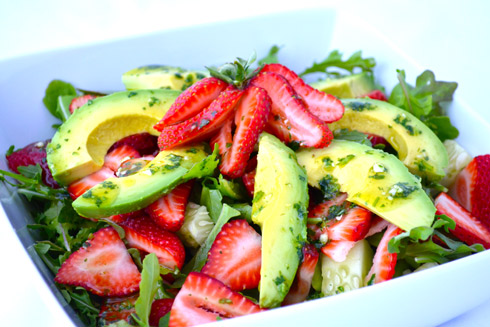Many people will tell you they’re gluten-free. Others will tell you they don’t have to worry about it. Ask any of those people what gluten is and chances are they won’t be able to properly define it. Which sets up two dilemmas; people that say they are gluten-free are probably still consuming some gluten, and worse, people that shouldn’t be consuming gluten are, not knowing that they are intolerant to it.
Okay, with that out of the way, just what is gluten? Simply put, gluten is a substance made up of several proteins, a protein composite. Gluten is found in wheat and other related grains as well as cereal grains. Gluten comes from the endosperm within the seeds of cereal grains and is a storage protein that feeds plants during germination. This is common in almost all flowering plants.
The four primary proteins in gluten are albumins, glutelins, globulins, and prolamins. In wheat gluten, glutelins and prolamins are the most common. Albumins and globulins are the primary storage proteins in corn gluten and rice gluten and are not associated with celiac disease, or gluten intolerance. Prolamin gliadin and the prolamin-like glutelin make up about 80 percent of the protein in wheat. These are the proteins responsible for triggering celiac disease and a non-celiac gluten sensitivity. Prolamins are insoluble in water which is important when making dough products such as bread. The gluten provides the crunchiness of bread, the more gluten, the chewier the bread (like pizza crust or bagels).
Right now you’re probable thinking, so what! Well, the problem is a lot of people suffer from gluten intolerance, but don’t recognize it. There are two forms of gluten intolerance, celiac disease and non-celiac gluten sensitivity. Celiac disease is an autoimmune disease that manifests itself primarily in the small intestine. When people with celiac disease consume gluten, there is an interaction with the gluten that causes an immune system reaction that damages the lining of the small intestine. This reaction causes inflammation and damages the walls of the small intestine, cutting down on the amount of nutrients we absorb from our food. Also, this damage causes intestinal hyper permeability, or leaky gut syndrome. When you suffer from leaky gut syndrome, protein fragments and toxins that should have remained in your small intestine pass through your intestinal wall into your bloodstream. The combination of these two processes causes a number of symptoms, including celiac disease.
If you have gluten intolerance, the easy answer is to go on a gluten-free diet removing all things gluten from you diet. It is best if you try to eat gluten-free whole grains and gluten-free nuts. It is important to avoid wheat, barley, and rye. Wheat starch must also be avoided. Be aware that it can be found in sauces like soy sauce and barbecue sauces. Most beers also contain barley which also contains gluten. Finding gluten-free beers can be difficult. If you intend to go gluten-free it is best to read labels carefully or visit a health food store that specializes in gluten-free grains and pastas.
Gluten-Free Foods
There are plenty of tasty alternatives to gluten enriched foods. Once you get used to reading labels and locating your favorite places to shop for gluten-free products, it will become second nature. Here are some alternatives if you think you’re willing to give gluten-free a try:
•Quinoa
•Brown and white rice pasta
•Corn pasta, when made from 100% corn
•Corn tortillas and corn taco shells, when made from 100% corn
•Nut butters: almond, cashew, and peanut butters.
•Rice noodles and rice glass noodles
•Seed butters: hemp seed butter, sesame, and sunflower seed butter.
•Soba noodles (make sure they are 100% buckwheat)
Also, here are some wheat flower substitutes:
•Buckwheat (includes Kasha)
•Quinoa flour
•Chick pea or garbanzo flour
•Coconut flour
•Corn (including cornmeal, corn starch and masa harina)
•Millet flour
•Nut meals and flours, including almond, cashew, and chestnut
•Potato starch (for baking)
•Rice flour (includes white rice, sweet rice and brown rice flours)
•Sorghum flour
•Tapioca starch, also called tapioca flour
Even with all this information, finding certain foods that come completely gluten-free can be difficult sometimes. Luckily, there are a few local places that carry a large variety of products to help you satisfy your gluten-free lifestyle. Living Well carries gluten-free bread rolls and muffins, pizza crusts, donuts, pretzels and protein bars. You can also find delicious oatmeal and pancake mixes that are completely gluten-free. Angelina’s Italian Kitchen offers pasta entrees that can be served gluten-free upon request. Also, stop by Herb’s Herbs and check out their great selection of gluten-free cheese, cookies, pasta, cereal, soup and vitamins.
The bottom line is that going gluten-free can help you feel better. Many people that have gone gluten-free have enjoyed remarkably better healthy with more energy and less stomach related problems. While many people may not understand exactly what gluten intolerance is, they’ve made the change and have improved their lives. If you’ve been feeling poorly lately and have no explanation for it, now might be the time to do a little research and decide if a gluten-free diet is for you.


